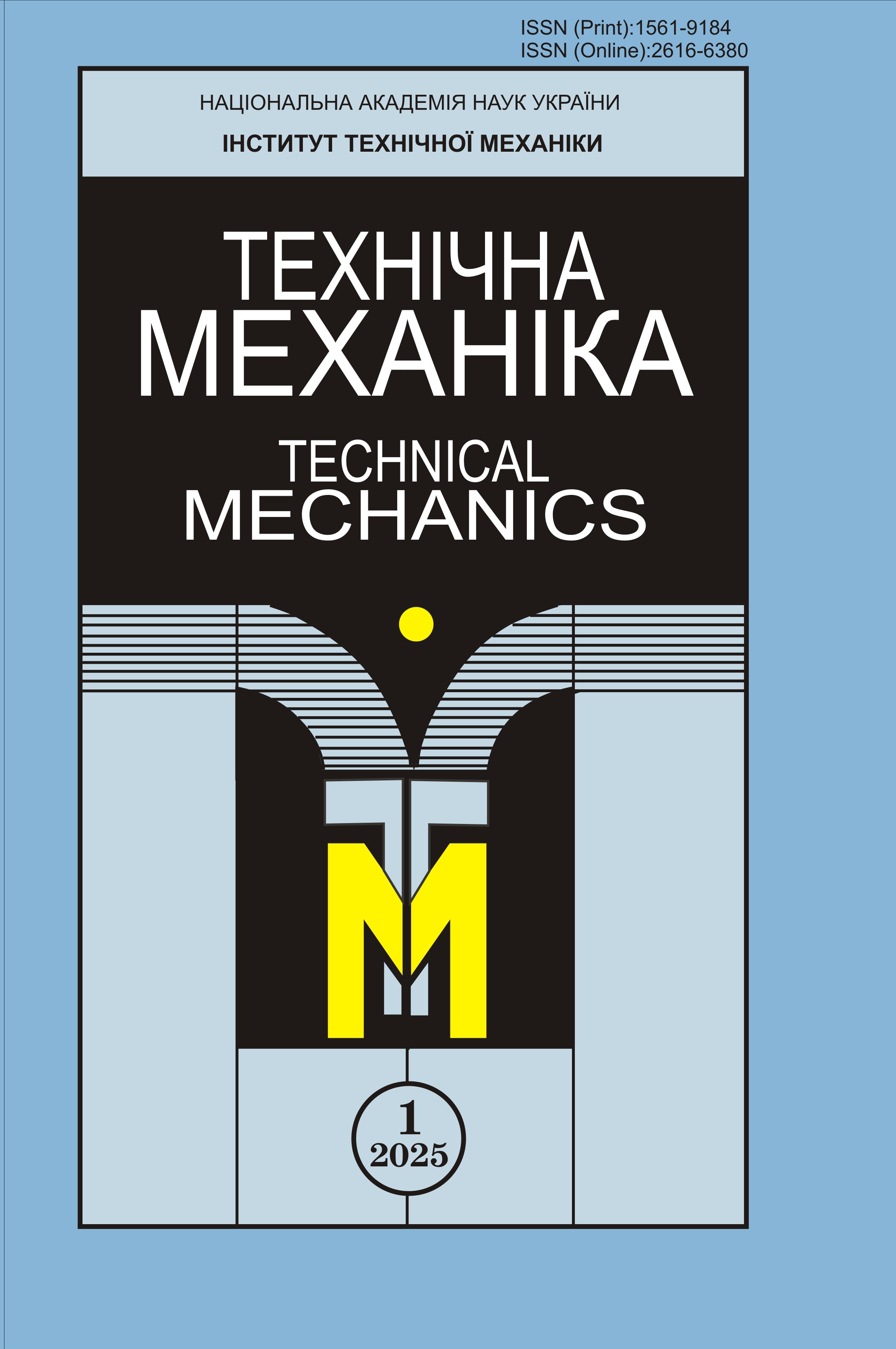NUMERICAL AND EXPERIMENTAL STUDIES OF SUPERSONIC NOZZLE FLOW OVER A CYLINDRICAL OBSTACLE ON A WALL WITH GAS INJECTION
Keywords:
thrust vector, gas-dynamic control, interceptor, numerical modelingAbstract
DOI: https://doi.org/10.15407/itm2025.01.003
Thrust vector control is a crucial aspect of rocket engine design. In particular, of certain interest are gas-dynamic control systems, where control forces are produced by inserting solid obstacles – interceptors – into a supersonic flow. Inserting an interceptor into the supersonic area of a nozzle enables flight trajectory control, especially in the case of stabilization and low control forces. The aim of this work is to investigate gas-dynamic methods of thrust vector control in rocket engines using interceptor systems and to assess their efficiency through experimental and numerical simulation techniques. The importance of this study lies in the need to enhance the accuracy and efficiency of rocket flight control, which is of critical importance for modern space and defense technologies. The use of interceptor systems in thrust vector control improves the maneuverability and stability of rockets, particularly during stabilization phases and when low control forces are required. However, a complex flow structure in the supersonic flow – interceptor interaction zone, including shock waves, separation zones, and vortex structures, complicates an accurate prediction of control characteristics. Traditional experimental studies of such processes require significant resources and often fail to provide a comprehensive understanding of the physical phenomena. Therefore, numerical simulation of turbulent supersonic flows based on the Navier-Stokes equations has become an important analytical tool. However, its effectiveness depends on verification adequacy. In this context, research that combines experimental methods and numerical simulation represents a significant step toward developing more reliable and efficient thrust vector control systems. Experimental studies of transversal supersonic flow over cylindrical obstacles with gas injection into the flow were conducted using the testing facilities of the Institute of Technical Mechanics of the National Academy of Sciences of Ukraine and the State Space Agency of Ukraine. The experimental model was a flat semi-nozzle with transparent sidewalls to observe and photograph the nozzle flow. The static pressure was measured in the flow–interceptor interaction zone. A numerical simulation was performed using the Ansys Fluent software package with various turbulence models to evaluate viscous supersonic flows. The numerical simulation gave flow patterns and the static pressure distribution in the flow–interceptor interaction zone. The calculated results were compared with the experimental ones. It was shown that the numerical simulation satisfactorily reproduces the key experimental features, including shock waves, separation zones, and local reverse flows. This study broadens the understanding of supersonic flow – interceptor interaction mechanisms, in particular when using secondary gas injection or a coolant fluid. For the first time, experimental and numerical data for systems of this type were compared in detail, thus offering a more accurate evaluation of the effect of geometrical and physical parameters on the flow characteristics. The results may immediately be used in improving existing thrust vector control systems and developing new ones. This will contribute to rocket navigation accuracy and flight stability improvement and effective maneuvering, which is of critical importance to the accomplishment of complex space and defense tasks.
REFERENCES
1. Luo D. Numerical simulation of supersonic turbulent separated flows based on k-ω turbulence models with different compressibility corrections. Aerospace. 2023. V. 10. No. 14. 1014.
https://doi.org/10.3390/aerospace10121014
2. Aghaei-Jouybari M., Yuan J., Li Z., Brereton G. J., Jaberi F. A. Supersonic turbulent flows over sinusoidal rough walls. Journal of Fluid Mechanics. 2023. V. 956. Pp. 1-27.
https://doi.org/10.1017/jfm.2022.1049
3. Gang D., Yi S., Niu H. Experimental investigation of supersonic turbulent flow over cylinders with various heights. Journal of Visualization. 2021. V. 24. Pp. 461-470.
https://doi.org/10.1007/s12650-020-00723-1
4. Nastac G., Frendi A. An investigation of scale-resolving turbulence models for supersonic retropropulsion flows. Fluids. 2022. V. 7. No. 12. 362.
https://doi.org/10.3390/fluids7120362
5. Strelnikov G., Ihnatiev O., Pryadko N., Ternova K. Efficiency of rocket engine thrust vector control by solid obstacle on the nozzle wall. Proceedings of the Institution of Mechanical Engineers, Part G: Journal of Aerospace Engineering. 2022. V. 236. Iss. 16. Pp. 3344-3353.
https://doi.org/10.1177/09544100221083714
6. Launder B. E., Spalding D. B. Lectures in Mathematical Models of Turbulence. London, New York: Academic Press, 1972. 169 p.
7. Wilcox D. C. Turbulence Modeling for CFD. La Canada, California: DCW Industries, Inc., 1998. 460 p.
8. Wilcox D. C. Formulation of the k-ω turbulence model revisited. AIAA Journal. 2008. V. 46. No. 11. Pp. 2823-2838.
https://doi.org/10.2514/1.36541
9. Menter F. R. Two-equation eddy-viscosity turbulence models for engineering applications. AIAA Journal. 1994. V. 32. No. 8. Pp. 1598-1605.
https://doi.org/10.2514/3.12149
10. Menter F. R., Langtry R. B., Likki S. R., Suzen Y. B., Huang P. G., Völker S. A correlation-based transition model using local variables-part I: model formulation. Journal of Turbomachinery. 2006. V. 128, No. 3. Pp. 413-422.
https://doi.org/10.1115/1.2184352






